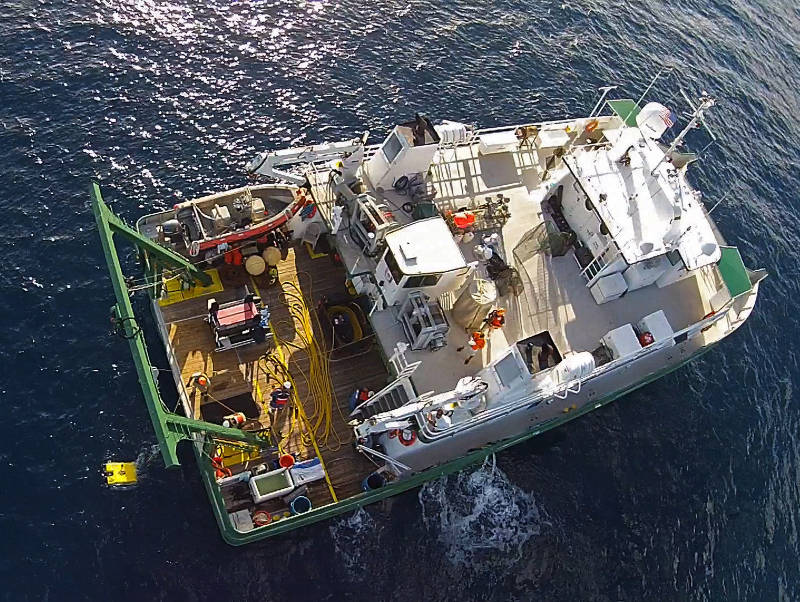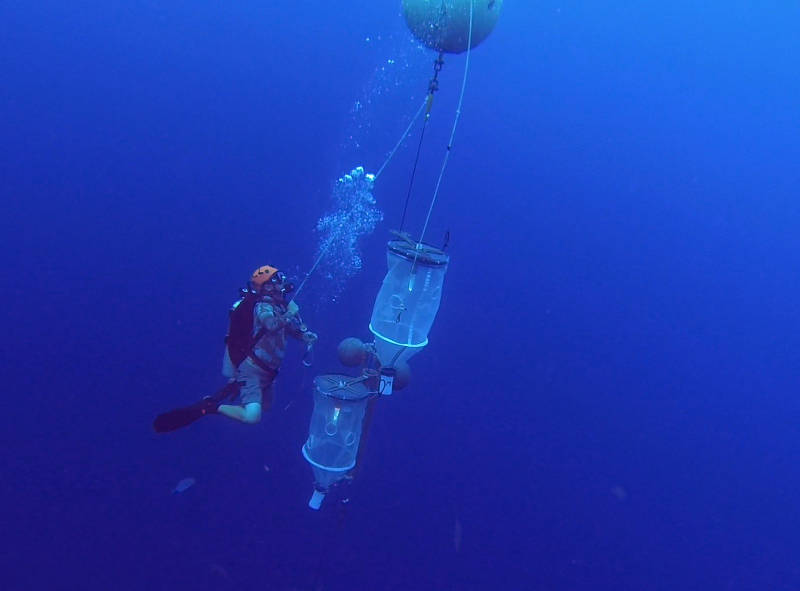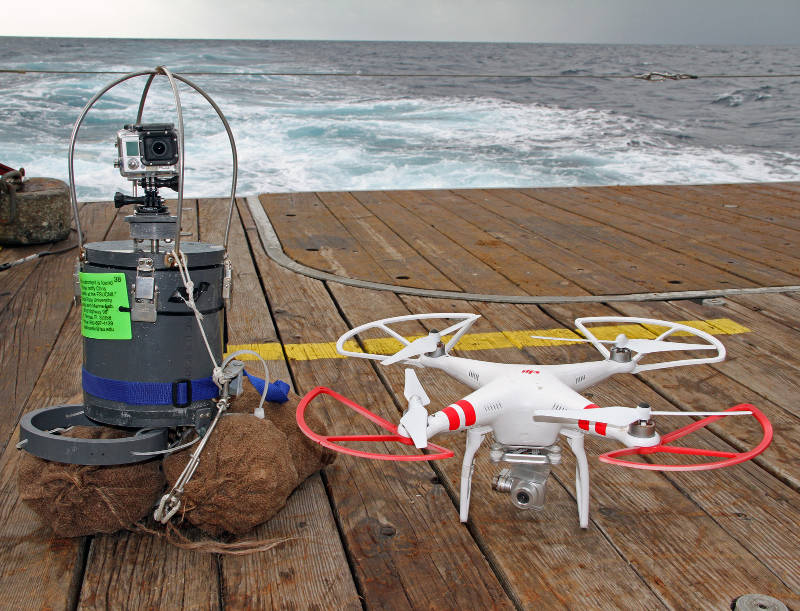
By Brian Cousin, Florida Atlantic University – Harbor Branch
August 24, 2014

Purchasing three of the drones like the one Cedric Guigand brought on board would cost less than a half-day charter of a helicopter with camera, if you could get one to come this far offshore. Image from video. Image courtesy of Cedric Guigand, University of Miami Rosenstiel School of Marine and Atmospheric Science. Download larger version (jpg, 1.0 MB).
Back around the turn of the century, or the millennium if you’d rather – old times in terms of the digital age – I was reporting my first mission logs for the Harbor Branch Oceanographic Institution web site, @sea. I had a Betacam SP analog video camera and a big box of tapes to capture the moving action, and a brand new Nikon Cool-Pix digital still camera to immortalize single moments in time. The Nikon was a bit slow responding to shutter pressing and so many pictures captured the moment immediately following the ‘Kodak moment.’ Little could be done with the Beta SP at sea that could be managed in the limited twice-daily satellite transmissions between ship and shore, same with the Hi8 (analog) video of the deep sea that surfaced with the Johnson-Sea-Link submersibles following each dive.

A GoPro camera on the support diver’s helmet records deployment of the plankton light traps. In this image from video, Cedric Guigand has just pulled the release line to start the traps on their descent down the mooring line. Image courtesy of Brian Cousin, Florida Atlantic University – Harbor Branch. Download larger version (jpg, 465 KB).
Over the past few years, a revolution has taken place in the digital imaging arena with the introduction of new cameras and platforms at super-low prices making them accessible to a widening consumer base. Almost everyone on the ship has at least one GoPro camera.
The Florida State University fish scientists have 10 GoPros enlisted in the pursuit of scientific documentation, including five for the ‘Revolution’ fish survey array. Others are deployed whenever and wherever imagination wanders: examples include a view looking up from a light trap as it rides the mooring line into the depths, on the tether of the remotely operated vehicle for a shot of the actual vehicle, on a crane arm, on the In-situ Ichthyoplankton Imaging System, and on a fish trap to see how grouper approach the bait. These robust little cameras seem virtually indestructible, reliable, and perform at depths well in excess of the manufacturer’s suggested limit.
Cedric Guigand (University of Miami Rosenstiel School of Marine and Atmospheric Science) has brought a drone on the cruise, so we are acquiring aerial footage of the ship and various activities that benefit from a camera angle that is just off the ship.

The GoPro camera (in this shot mounted on one of the Florida State University ‘Revolution’ fish surveyors), and the drone camera provide unique perspectives on our explorations of Pulley Ridge. Image courtesy of Brian Cousin, Florida Atlantic University – Harbor Branch. Download larger version (jpg, 985 KB).
There are a lot of winners in the explosion of low-cost digital image capture devices including the scientists who can illustrate their incredible work in unique new ways and the visitors to places like this NOAA Ocean Explorer web site, who can enjoy a richer visual experience that helps promote understanding and interest in the pursuit of science at sea.